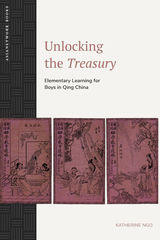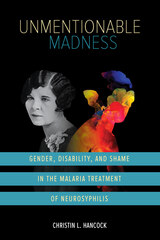261 scholarly books by Bodleian Library Publishing and 9
start with A
261 scholarly books by Bodleian Library Publishing and 9
261 scholarly books by Bodleian Library Publishing
9 start with A start with A
9 start with A start with A
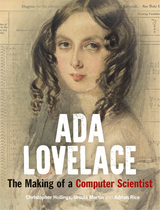
Ada Lovelace
The Making of a Computer Scientist
Christopher Hollings, Ursula Martin and Adrian Rice
Bodleian Library Publishing, 2018
Ada, Countess of Lovelace (1815–52), daughter of romantic poet Lord Byron and the highly educated Anne Isabella, is sometimes called the world’s first computer programmer, and she has become an icon for women in technology today. But how did a young woman in the nineteenth century, without access to formal schooling or university education, acquire the knowledge and expertise to become a pioneer of computer science?
Although it was an unusual pursuit for women at the time, Ada Lovelace studied science and mathematics from a young age. This book uses previously unpublished archival material to explore her precocious childhood—from her curiosity about the science of rainbows to her design for a steam-powered flying horse—as well as her ambitious young adulthood. Active in Victorian London’s social and scientific elite alongside Mary Somerville, Michael Faraday, and Charles Dickens, Ada Lovelace became fascinated by the computing machines of Charles Babbage, whose ambitious, unbuilt invention known as the “Analytical Engine” inspired Lovelace to devise a table of mathematical formulae which many now refer to as the “first program.”
Ada Lovelace died at just thirty-six, but her work strikes a chord to this day, offering clear explanations of the principles of computing, and exploring ideas about computer music and artificial intelligence that have been realized in modern digital computers. Featuring detailed illustrations of the “first program” alongside mathematical models, correspondence, and contemporary images, this book shows how Ada Lovelace, with astonishing prescience, first investigated the key mathematical questions behind the principles of modern computing.
Although it was an unusual pursuit for women at the time, Ada Lovelace studied science and mathematics from a young age. This book uses previously unpublished archival material to explore her precocious childhood—from her curiosity about the science of rainbows to her design for a steam-powered flying horse—as well as her ambitious young adulthood. Active in Victorian London’s social and scientific elite alongside Mary Somerville, Michael Faraday, and Charles Dickens, Ada Lovelace became fascinated by the computing machines of Charles Babbage, whose ambitious, unbuilt invention known as the “Analytical Engine” inspired Lovelace to devise a table of mathematical formulae which many now refer to as the “first program.”
Ada Lovelace died at just thirty-six, but her work strikes a chord to this day, offering clear explanations of the principles of computing, and exploring ideas about computer music and artificial intelligence that have been realized in modern digital computers. Featuring detailed illustrations of the “first program” alongside mathematical models, correspondence, and contemporary images, this book shows how Ada Lovelace, with astonishing prescience, first investigated the key mathematical questions behind the principles of modern computing.
[more]
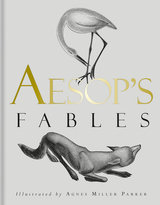
Aesop's Fables
Illustrated by Agnes Miller Parker
Bodleian Library Publishing, 2020
For twenty-five centuries, the animal stories that go by the name of Aesop's Fables have amused and instructed generations of children and adults alike. The tales are still as fresh and poignant today as they were to the ancient Greeks who composed them. This beautifully illustrated edition contains some of the best-loved fables, including "The Boy who Cried Wolf," "The Lion and the Mouse," "The Goose that Laid the Golden Egg," "The Hare and the Tortoise," and "The Town Mouse and the Country Mouse," alongside many of the lesser-known tales. These timeless stories are illustrated with thirty-seven woodcuts by Agnes Miller Parker (1895–1980), one of the greatest British wood engraving artists of the twentieth century. Parker's distinctive work is strikingly stylized and deceptively simple. Commissioned in the 1930s by the fine press publisher Gregynog Press for their edition of the work, these exquisite engravings are among Parker's finest work.
[more]
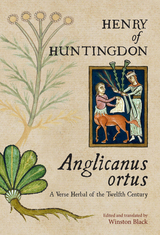
Anglicanus ortus
A Verse Herbal of the Twelfth Century
Henry of Huntingdon
Bodleian Library Publishing, 2012
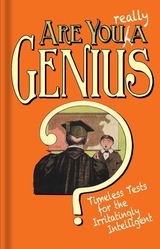
Are You Really a Genius?
Timeless Tests for the Irritatingly Intelligent
Robert A. Streeter and Robert G. Hoehn
Bodleian Library Publishing, 2015
“If a hen and a half lays an egg and a half in a day and a half, how many eggs will seven hens lay in six days?”
“By rearranging the letters in the word ‘plea,’ make three new words.”
“Which is heavier, milk or cream?”
If you think you know the answers to these questions, you may be a genius! Before the Mensa admissions test or the awarding of MacArthur “Genius Grants,” self-described geniuses Robert A. Streeter and Robert G. Hoehn set out in the 1930s on a mission to find more men and women of above-average intelligence. Central to this undertaking were tests filled with fiendishly difficult brainteasers, tortuous trick questions, and complex calculations that could be administered to the unsuspecting.
Are You Really a Genius? collects a series of Streeter and Hoehn’s tests into a quirky quiz book. Throughout the tests are timeless favorites, as well as many charmingly old-fashioned scenarios reflecting simpler times past. For those struggling to reach the correct answers, a final three-point “brain twister” offers a chance for redemption. And for those not quite up to the challenge, a “moron’s morgue” may help improve one’s intellectual standing. Using the answer key found at the back of the book, each test can be carefully scored to determine the exact level of genius attained.
Think you’re in the company of the “rare Craneo-Bulgis species?” In the words of the authors, “sneak up on your friends and spring the questions on the following pages.”
Still wondering about the answers to the questions at the top?
1) 28 eggs
2) leap, peal, and pale
3) milk, because cream comes to the surface
“By rearranging the letters in the word ‘plea,’ make three new words.”
“Which is heavier, milk or cream?”
If you think you know the answers to these questions, you may be a genius! Before the Mensa admissions test or the awarding of MacArthur “Genius Grants,” self-described geniuses Robert A. Streeter and Robert G. Hoehn set out in the 1930s on a mission to find more men and women of above-average intelligence. Central to this undertaking were tests filled with fiendishly difficult brainteasers, tortuous trick questions, and complex calculations that could be administered to the unsuspecting.
Are You Really a Genius? collects a series of Streeter and Hoehn’s tests into a quirky quiz book. Throughout the tests are timeless favorites, as well as many charmingly old-fashioned scenarios reflecting simpler times past. For those struggling to reach the correct answers, a final three-point “brain twister” offers a chance for redemption. And for those not quite up to the challenge, a “moron’s morgue” may help improve one’s intellectual standing. Using the answer key found at the back of the book, each test can be carefully scored to determine the exact level of genius attained.
Think you’re in the company of the “rare Craneo-Bulgis species?” In the words of the authors, “sneak up on your friends and spring the questions on the following pages.”
Still wondering about the answers to the questions at the top?
1) 28 eggs
2) leap, peal, and pale
3) milk, because cream comes to the surface
[more]
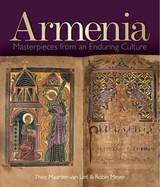
Armenia
Masterpieces from an Enduring Culture
Theo Maarten van Lint and Robin Meyer
Bodleian Library Publishing, 2015
Between East and West, Armenian culture bears the influence of the country’s long history of foreign occupation, with a vibrant national art and literature that reinterprets elements from a wide variety of cultures, from the Sasanian dynasty of Iran to the Byzantine Empire.
Published to accompany an exhibition at the Bodleian Library, Armenia: Masterpieces from an Enduring Culture draws on the Libraries’ magnificent collection of Armenian manuscripts and early printed books, as well as works of art and religious artifacts to tell the story of the region. The book contains nearly two hundred color illustrations of some of the most treasured masterpieces, from philosophical treatises to splendidly illuminated gospel manuscripts. Also including four essays by experts in the field, the book affords ample insight into the perseverance of the Armenian people in the face of tremendous adversity.
Published to accompany an exhibition at the Bodleian Library, Armenia: Masterpieces from an Enduring Culture draws on the Libraries’ magnificent collection of Armenian manuscripts and early printed books, as well as works of art and religious artifacts to tell the story of the region. The book contains nearly two hundred color illustrations of some of the most treasured masterpieces, from philosophical treatises to splendidly illuminated gospel manuscripts. Also including four essays by experts in the field, the book affords ample insight into the perseverance of the Armenian people in the face of tremendous adversity.
[more]
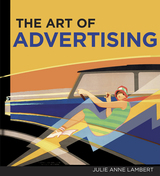
The Art of Advertising, The
Julie Anne Lambert
Bodleian Library Publishing, 2020
Advertisers in the nineteenth and early twentieth century pushed the boundaries of printing, manipulated language, inspired a new form of art and exploited many formats, including calendars, bookmarks and games. This collection of essays examines the extent to which these standalone advertisements – which have survived by chance and are now divorced from their original purpose – provide information not just on the sometimes bizarre products being sold, but also on class, gender, Britishness, war, fashion and shopping. Starting with the genesis of an advertisement through the creation of text, image, print and format, the authors go on to examine the changing profile of the consumer, notably the rise of the middle classes, and the way in which manufacturers and retailers identified and targeted their markets. Finally, they look at advertisements as documents that both reveal and conceal details about society, politics and local history. Copiously illustrated from the world-renowned John Johnson Collection of Printed Ephemera and featuring work by influential illustrators John Hassall and Dudley Hardy, this attractive book invites us to consider both the intended and unintended messages of the advertisements of the past.
[more]
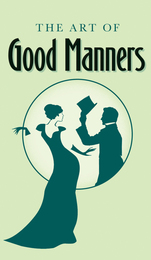
The Art of Good Manners
Edited by the Bodleian Library
Bodleian Library Publishing, 2014
While many bemoan the lack of good manners in society today, the most courteous among us would feel mightily out of place across the dining table from a Dowager Countess. Upholding the highest standards of social decorum was of utmost importance for the 1920s British upper class and even more so for the aspiring middle class that sought to emulate it. Yet the path to perfect comportment seemed strewn—then as now—with pitfalls, from befuddling arrays of silverware to less-than-gracious houseguests. Originally published in the 1920s, this petite guide offers time-honored advice to avoid such pitfalls.
The Art of Good Manners ranges broadly across topics including courtship, children’s behavior, and civilized conversation before taking the reader through each course at a dinner party, where readers are reminded to neither gurgle the soup nor to make haste with the fruit course since “to peel an orange, apple or pear with a fruit knife and fork requires some practice.”
Charmingly presented, The Art of Good Manners is by turns humorously old-fashioned and timeless, and it makes the perfect gift for all who miss this elegant bygone era.
The Art of Good Manners ranges broadly across topics including courtship, children’s behavior, and civilized conversation before taking the reader through each course at a dinner party, where readers are reminded to neither gurgle the soup nor to make haste with the fruit course since “to peel an orange, apple or pear with a fruit knife and fork requires some practice.”
Charmingly presented, The Art of Good Manners is by turns humorously old-fashioned and timeless, and it makes the perfect gift for all who miss this elegant bygone era.
[more]
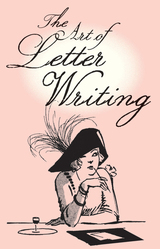
The Art of Letter Writing
Edited by the Bodleian Library
Bodleian Library Publishing, 2014
While many bemoan the lack of good manners in society today, the most courteous among us would feel mightily out of place across the dining table from a Dowager Countess. Upholding the highest standards of social decorum was of utmost importance for the 1920s British upper class and even more so for the aspiring middle class that sought to emulate it. Yet the path to perfect comportment seemed strewn—then as now—with pitfalls, from befuddling arrays of silverware to less-than-gracious houseguests. Originally published in the 1920s, the petite guides in the Bodleian Library’s series offer time-honored advice to avoid such pitfalls.
The Art of Letter Writing provides more than fifty examples of well-crafted correspondence that will lend confidence whether one needs to break off an engagement, accept an invitation to a country house weekend, complain about a courier, or write to a countess.
Charmingly presented, The Art of Good Letter Writing is by turns humorously old-fashioned and timeless, and it makes the perfect gift for all who miss this elegant bygone era.
The Art of Letter Writing provides more than fifty examples of well-crafted correspondence that will lend confidence whether one needs to break off an engagement, accept an invitation to a country house weekend, complain about a courier, or write to a countess.
Charmingly presented, The Art of Good Letter Writing is by turns humorously old-fashioned and timeless, and it makes the perfect gift for all who miss this elegant bygone era.
[more]
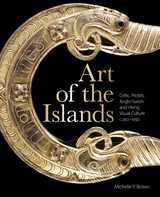
Art of the Islands
Celtic, Pictish, Anglo-Saxon and Viking Visual Culture, c. 450-1050
Michelle P. Brown
Bodleian Library Publishing, 2015
The Celtic, Pictish, Anglo-Saxon, and Viking peoples who inhabited the British Isles and Ireland from late prehistory to the Normal Conquest left behind a rich visual heritage that continues to be felt today. The traditions of each of these peoples has been studied separately, but rarely has the historical interaction of these cultures been adequately considered.
Michelle P. Brown remedies this oversight, presenting an extensively illustrated art historical overview of this formative period in the region’s history. Describing the interactions between the region’s inhabitants, she also explores the formation of national and regional identities. Brown ranges across works as diverse as the Book of Kells, the Tara Brooch, the Aberlemno Stone, the Lindisfarne Gospels, the Alfred Jewel, and the Benedictional of St. Ethelwold, showing how their complex imagery can be best interpreted. She also considers the impact of the art of this period upon the history of art in general, exploring how it has influenced many movements since, from the Carolingian Renaissance and the Romanesque style to the nineteenth-century Arts and Crafts movement.
Michelle P. Brown remedies this oversight, presenting an extensively illustrated art historical overview of this formative period in the region’s history. Describing the interactions between the region’s inhabitants, she also explores the formation of national and regional identities. Brown ranges across works as diverse as the Book of Kells, the Tara Brooch, the Aberlemno Stone, the Lindisfarne Gospels, the Alfred Jewel, and the Benedictional of St. Ethelwold, showing how their complex imagery can be best interpreted. She also considers the impact of the art of this period upon the history of art in general, exploring how it has influenced many movements since, from the Carolingian Renaissance and the Romanesque style to the nineteenth-century Arts and Crafts movement.
[more]
READERS
Browse our collection.
PUBLISHERS
See BiblioVault's publisher services.
STUDENT SERVICES
Files for college accessibility offices.
UChicago Accessibility Resources
home | accessibility | search | about | contact us
BiblioVault ® 2001 - 2025
The University of Chicago Press



